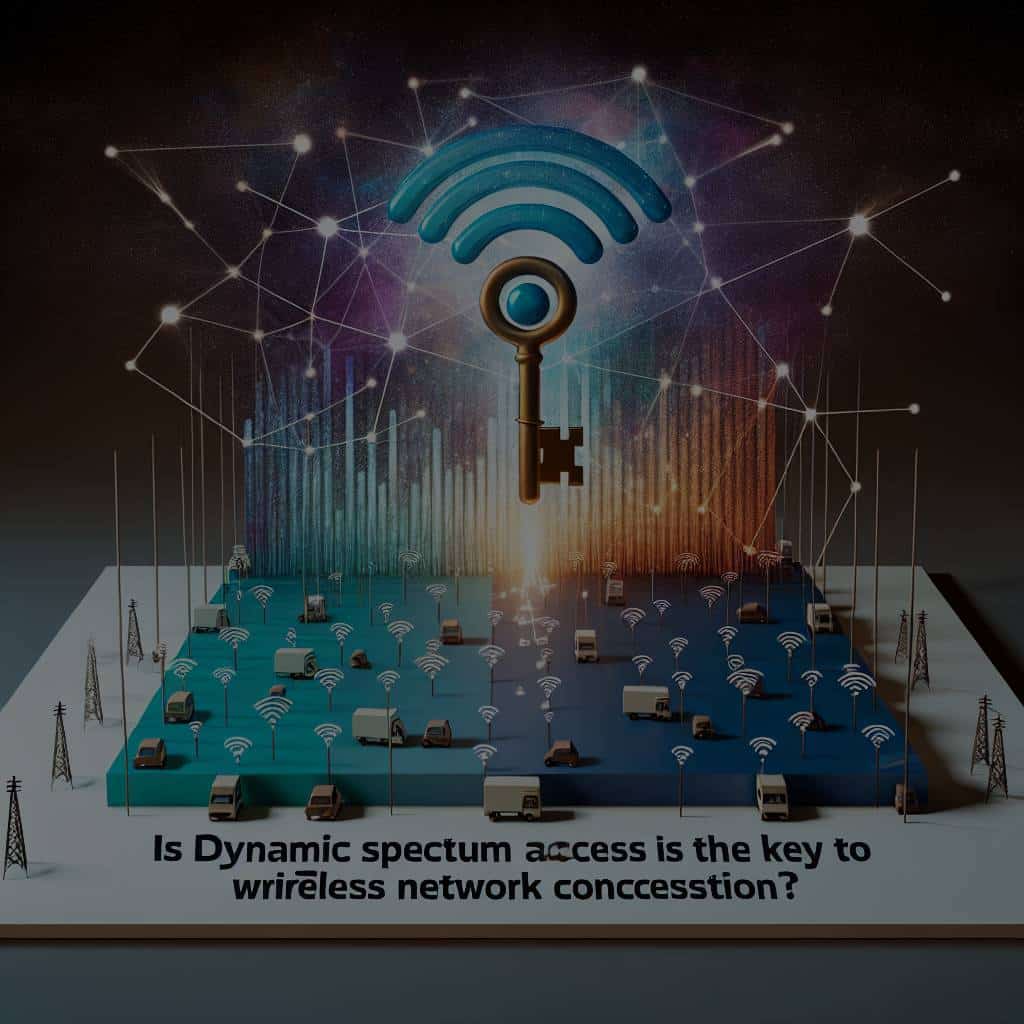Is Dynamic Spectrum Access the Key to Solving Wireless Network Congestion?

Wireless networks have revolutionised communication worldwide. However, with the proliferation of different devices accessing the internet, we are facing a new challenge: network congestion. With an increasing number of users connected in a particular area, the total available spectrum for wireless communication often falls short. One solution emerging from the tech industry is Dynamic Spectrum Access (DSA). This article delves into the crucial role DSA could play in alleviating the problem of wireless congestion.
What is Dynamic Spectrum Access?
Before understanding Dynamic Spectrum Access, it’s essential to grasp the concept of the spectrum. The spectrum refers to the range of all possible frequencies of electromagnetic radiation. In wireless communication, different devices like mobile phones, IoT gadgets, and radios use different parts of the spectrum. Each device has a designated band or frequency range within which it operates.
This might interest you : Unbox the adventure: exciting mystery toys await you
Dynamic Spectrum Access, as the name suggests, is a novel approach allowing the flexible, real-time allocation of spectrum bands. Unlike static access, where each device has a fixed band, DSA allocates the spectrum dynamically. This means that the system adjusts the allocation according to the current demand and usage in a given area.
So, why does this matter? A static spectrum access system often leads to inefficient use of the spectrum. Some bands are overcrowded, causing interference and slow data transfer, while others remain underutilised. DSA aims to solve this problem by ensuring that the total available spectrum is utilised more efficiently and effectively.
Also read : How Can Phased Array Ultrasound Technology Improve Early Breast Cancer Detection?
How Does Dynamic Spectrum Access Work?
At the heart of DSA lies a concept called ‘cognitive radio’. These are smart radios capable of detecting which spectrum bands are currently in use and which are free. They are designed to switch automatically to the free bands for transmission and reception, thereby optimising the use of the spectrum.
Cognitive radios employ a ‘listen-before-talk’ principle. They first scan the spectrum for free bands and only transmit if they find one. This way, they prevent interference with other devices operating in the same area. In addition, these radios can adapt their transmission parameters according to the characteristics of the available band.
DSA also employs advanced algorithms for efficient allocation and reallocation of the spectrum. These include machine learning techniques to predict network traffic and user behaviour, thereby further enhancing the effectiveness of the system.
Advantages of Dynamic Spectrum Access
The primary benefit of DSA is, of course, its potential to alleviate network congestion. By dynamically reallocating the spectrum, it ensures that the available resource is utilised to the maximum. This, in turn, can significantly improve the speed and efficiency of wireless communication.
Moreover, DSA can also contribute to better quality of service. Users no longer have to endure slow internet speeds or dropped calls due to overcrowded bands. Instead, the system ensures that each user gets a fair share of the spectrum and a more consistent service.
Finally, DSA can drive innovation in wireless technologies. By making more efficient use of the spectrum, it opens up opportunities for the development of new applications and services. This could include everything from advanced IoT solutions to the next generation of wireless networks.
Challenges in Implementing Dynamic Spectrum Access
Despite its potential, DSA is not without challenges. For one, the current regulatory environment often does not support dynamic spectrum access. Regulations typically assign fixed bands to different services, making it difficult to implement a dynamic system.
Moreover, cognitive radios, the backbone of DSA, are still an emerging technology. They require sophisticated hardware and software to function effectively. This can pose a significant cost barrier, especially for smaller service providers.
Finally, DSA needs to be integrated with existing network infrastructure. This requires significant investment in terms of money, time, and expertise. Therefore, it might take some time before DSA becomes mainstream.
The Future of Dynamic Spectrum Access
While there are hurdles to overcome, the future of Dynamic Spectrum Access looks promising. Many experts believe that DSA could play a vital role in the development of 5G and future wireless networks. Moreover, with the rapid proliferation of IoT devices and the ever-increasing demand for wireless connectivity, the need for efficient spectrum utilisation has never been greater.
As technology advances and regulatory environments evolve, it is likely that DSA will gain wider acceptance and implementation. In the end, it could very well be the key to solving the problem of wireless network congestion. Only time will tell.
Current Applications of Dynamic Spectrum Access
Understanding the theory and potential of Dynamic Spectrum Access is one thing, but seeing real-world applications can truly illustrate its transformative power. As of now, DSA has been deployed in several pilot projects and large-scale implementations, showcasing its potential to revolutionize wireless communication.
One of the most notable uses of DSA is in the TV White Space (TVWS) technology. TVWS refers to the unoccupied TV channels in the frequency band used for broadcasting. DSA allows these unused channels to be dynamically allocated for broadband internet access, especially in rural areas where traditional broadband infrastructure may be lacking.
In the United States, the Federal Communications Commission (FCC) has authorized the use of TVWS for broadband internet, subject to dynamic spectrum management. Companies such as Microsoft and Google have launched projects that leverage this technology to bring affordable internet access to underserved areas.
Another promising area for DSA application is the deployment of 5G networks and beyond. DSA is being seen as critical for managing the denser, more complex network topology of 5G. Similarly, the Internet of Things (IoT), which involves a massive number of connected devices, could also benefit significantly from DSA’s efficient and adaptive spectrum utilization.
Conclusion: A Dynamic Solution to a Growing Problem
In a world where our demand for wireless communication is growing exponentially, finding innovative solutions to manage spectrum resources is imperative. Dynamic Spectrum Access offers a smart, adaptive approach to spectrum management that could potentially alleviate network congestion and enhance the efficiency of wireless communication.
Though the technology still faces regulatory and technical hurdles, there’s no denying its potential. From rural broadband access via TV White Space to the deployment of advanced 5G and IoT networks, DSA has shown that it can truly be a game-changer.
As more advancements in cognitive radio technology and machine learning algorithms continue to be made, we can expect DSA to become an integral part of our wireless communication infrastructure. And as regulatory bodies worldwide begin to understand the benefits of dynamic spectrum sharing, it is likely we will see changes in legislation that will further enable DSA’s implementation.
Indeed, while the path to widespread DSA adoption may still be long and winding, one thing is clear: Dynamic Spectrum Access is no longer just a theoretical possibility. It is a viable, proven solution that holds the key to unlocking the full potential of our wireless networks. The future of DSA is not just promising – it is already here. And that future looks bright indeed.
